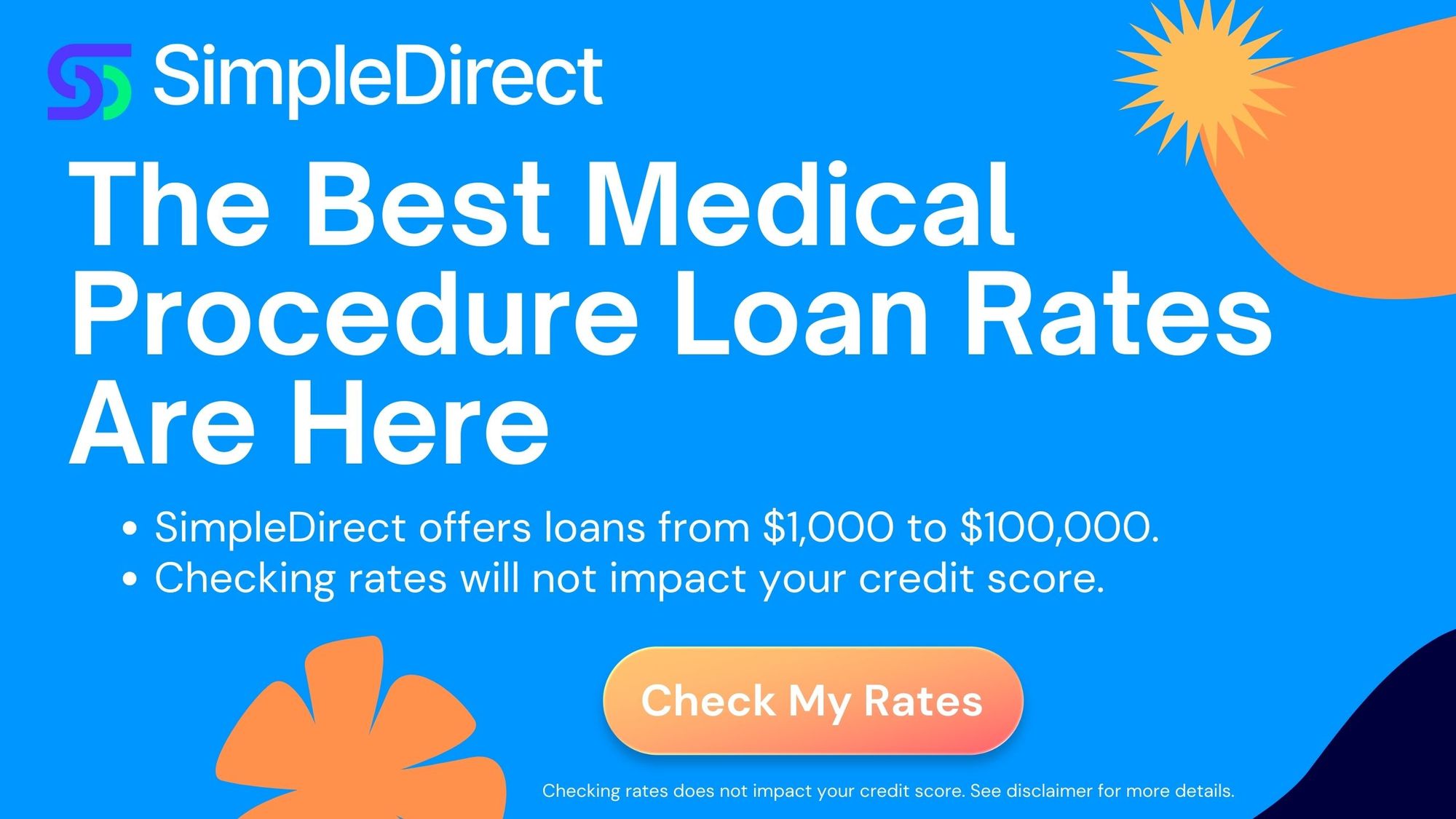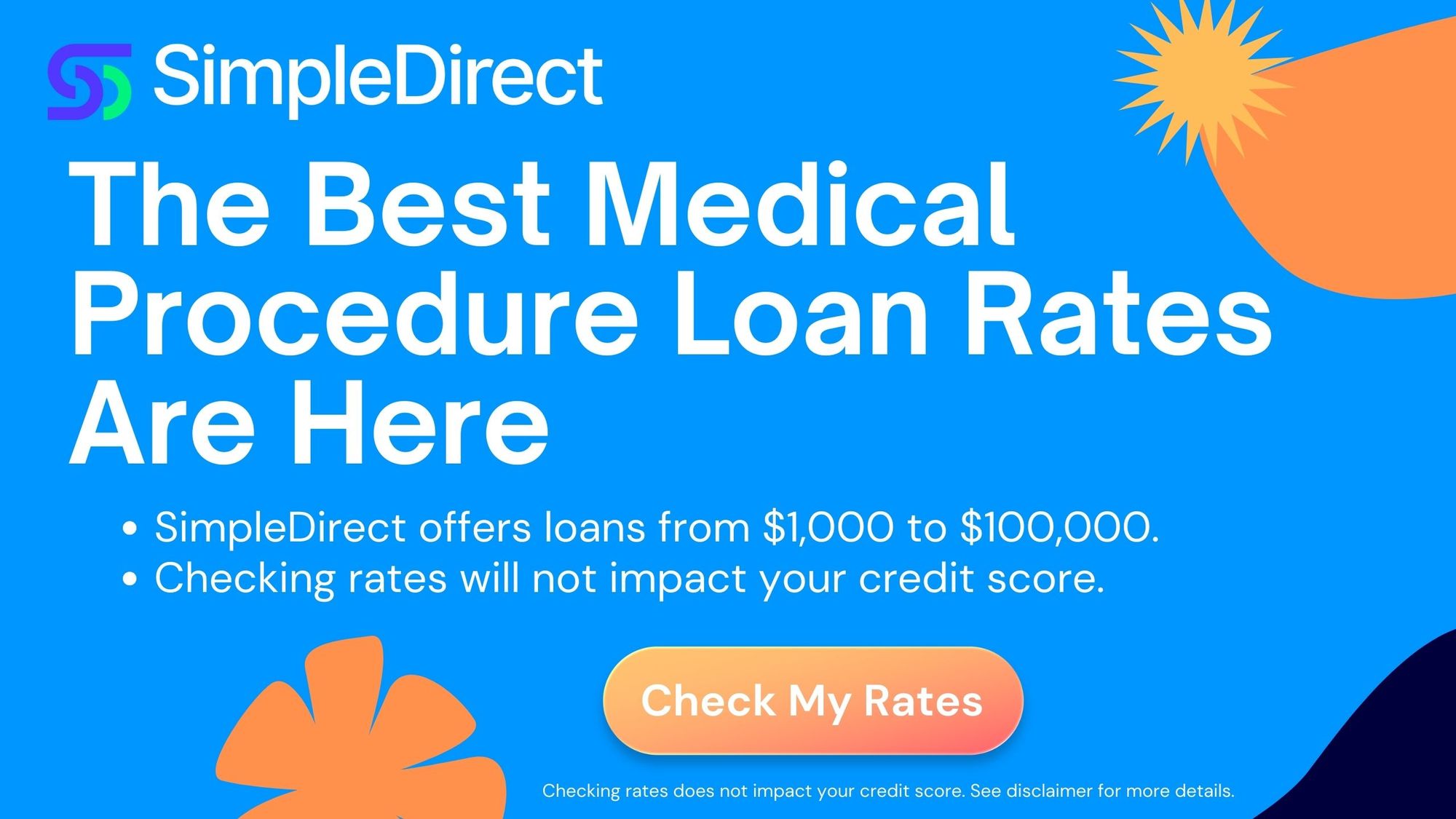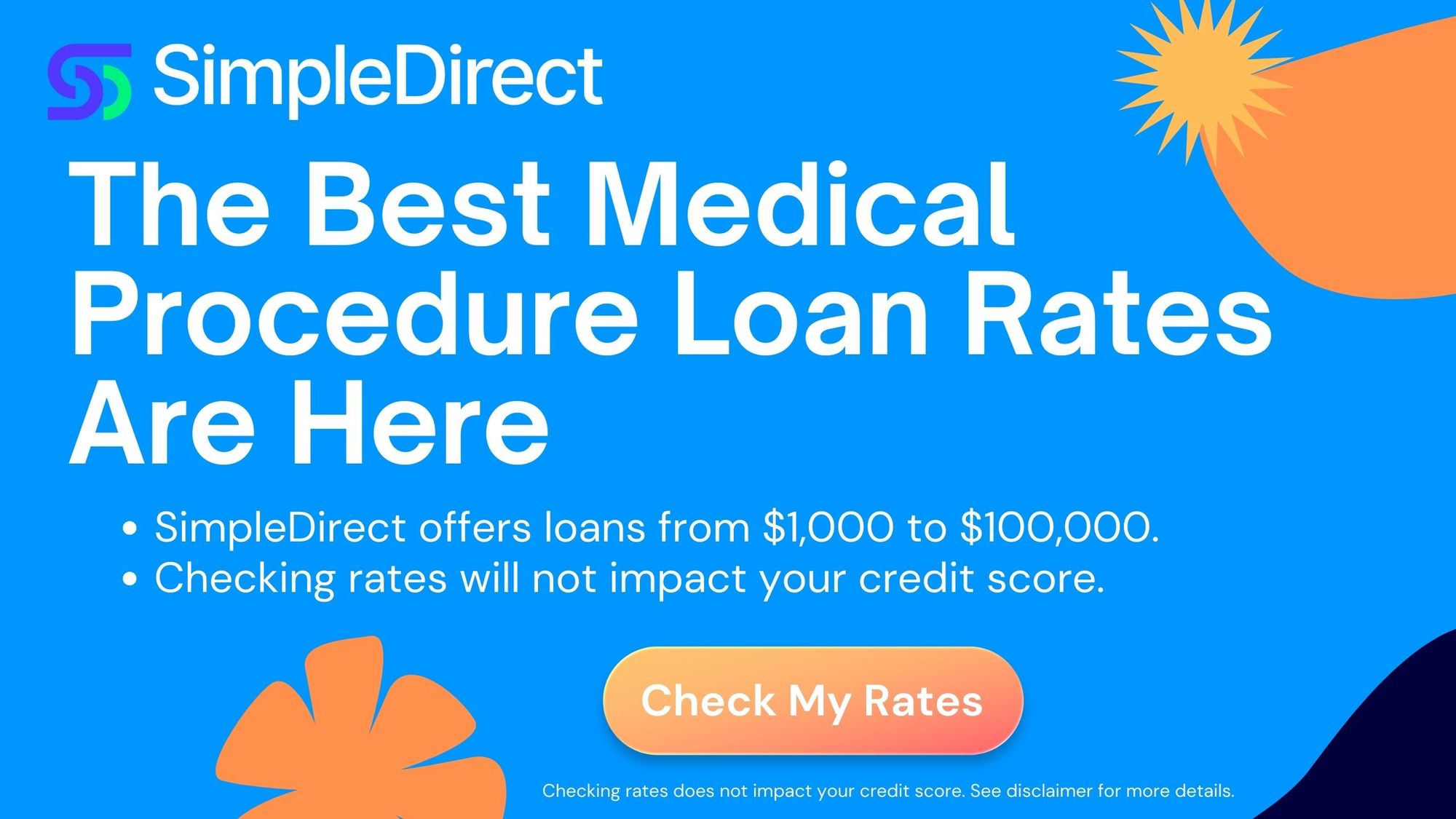Key Takeaways
- Medical procedure loans are financial products specifically designed to cover healthcare costs, offering an essential lifeline for patients needing immediate treatments.
- Several types of medical procedure loans are available, including secured, unsecured, and low-interest loans, each with their specific qualification criteria and terms.
- To qualify for a medical procedure loan, borrowers must meet certain eligibility criteria, including a good credit score, stable income, and other lender-specific requirements.
- It's crucial to compare different medical procedure loan providers to find the best rates and most favorable terms.
- While medical procedure loans provide much-needed financial support, they also come with potential downsides, including interest rates and potential debt issues.
- There are alternative financing options available, such as medical credit cards or payment plans through your healthcare provider.
- Repayment of medical procedure loans should be planned carefully to avoid financial strain, with strategies including budgeting, automatic payments, and seeking lower interest rates.
Understanding Medical Procedure Loans
Facing a hefty medical bill can be daunting. Whether it's an unexpected surgery or an elective procedure not covered by insurance, medical procedure loans offer a way to manage these expenses. Let's break down what these loans are and how they can help you.
What Are Medical Procedure Loans?
Medical procedure loans are personal loans designed to help cover healthcare costs. They're especially helpful for treatments not covered by insurance, allowing you to get the care you need without delay.
- Who Can Apply? Most adults with a stable income and decent credit can apply. Each lender has its own criteria, but generally, a credit score of 670 or above is favorable.
- Secured vs. Unsecured Loans: Most medical loans are unsecured, meaning you don't need collateral. However, this might mean higher interest rates compared to secured loans.

Why Consider a Medical Procedure Loan?
When medical expenses loom large, waiting can be costly. Here’s why you might consider a loan:
- Immediate Access to Care: Avoid delays and start treatment right away.
- Flexible Repayment: Choose a plan that fits your budget, spreading out costs over time.
- Unrestricted Use: Use the funds for any medical-related expense, from surgeries to prescription costs.
Sure, I can help re-write that section to make it more engaging and easier to read. Here it is:
Different Types of Medical Procedure Loans
When it comes to financing medical procedures, there are several loan options available, each with its own set of pros and cons. Let’s break them down:
- Secured Loans: These loans require you to put up collateral, like your home or car, which the lender can claim if you don't keep up with payments. The upside? They usually have lower interest rates. But be cautious—your assets are at risk if you can't repay the loan.
- Unsecured Loans: No collateral needed here. Instead, lenders look at your creditworthiness. While you won't risk losing your assets, expect higher interest rates because the lender is taking on more risk.
- Medical Credit Cards: Designed specifically for healthcare costs, these cards often offer 0% interest for a limited time. However, if you don’t pay off the balance by the end of the promo period, you could be hit with high interest on the original amount.
- Installment Plans: Some healthcare providers let you pay in installments. These plans are typically interest-free but may require an upfront payment. They can be a great choice if you can handle the initial cost and regular payments.
- Healthcare or Medical Loan Companies: These companies focus on loans for medical expenses and offer both secured and unsecured options. They often have competitive rates, but it's essential to research the lender and read the terms carefully.
- Home Equity Loans or Lines of Credit: If you own a home, you might be able to use its equity to finance medical procedures. This option usually comes with lower interest rates, but your home is on the line if you can’t repay.
Before choosing a loan, take a close look at your financial situation and repayment ability. It's always a good idea to read the loan terms thoroughly and consult with a financial advisor if needed.

How to Qualify for a Medical Procedure Loan
Getting a medical procedure loan involves a few steps and meeting certain requirements. Here’s a simplified guide to help you through the process:
- Check Your Credit Score
Start by reviewing your credit score, as lenders use it to assess your creditworthiness. Aim for a score of 670 or above to secure better loan terms and lower interest rates. - Identify Potential Lenders
Research various lenders, including banks, credit unions, online platforms, and healthcare financing companies. Compare their loan products, interest rates, terms, and eligibility requirements. - Prepare Your Documentation
Gather necessary documents such as proof of income, employment verification, and personal identification. This typically includes recent pay stubs, tax returns, a letter from your employer, and a copy of your ID or passport. - Submit Your Loan Application
Apply for the loan through the lender’s website, over the phone, or in person. Make sure to include all required documentation with your application. - Await Approval and Finalize the Loan
After submitting your application, wait for the lender to review it. This process can take from a few minutes to a few days. If approved, carefully review the loan agreement before signing to ensure you understand the terms and conditions.
Remember, while a medical procedure loan can help manage healthcare costs, it’s important to borrow responsibly. Make sure you have a solid repayment plan to avoid potential financial issues.
Comparing Medical Procedure Loan Providers
Choosing the right medical procedure loan provider is crucial, as it can significantly impact your financial situation. Here are several key factors to consider:
- Interest Rates: When it comes to loans, interest rates are a big deal. Imagine borrowing $10,000—if you snag a 5% interest rate, you'll pay less over time compared to a 10% rate. It's worth shopping around!
- Loan Terms: Loan terms decide how long you have to repay. Longer terms might mean lower monthly payments, but you'll pay more in the end due to interest. Shorter terms? Higher payments, but you'll save overall. Think about what fits your budget best.
- Fees: Some lenders sneak in fees like origination charges or penalties for paying off your loan early. For example, a 1-6% origination fee can add up! Make sure you know what fees you're signing up for.
- Reputation and Customer Service: Check out online reviews and ratings (like on the Better Business Bureau) to see what others say about the lender. Good customer service can make a world of difference if you hit a snag.
- Eligibility Requirements: LEvery lender has different criteria, such as a minimum credit score or income level. Make sure you qualify before applying, so you're not caught off guard.
- Flexibility: Some lenders offer deferment or forbearance options in case you encounter financial difficulties during repayment. These features can provide a safety net during hard times.
- Loan Amount: Ensure the lender can provide the amount you need. For example, if you need $15,000 for a surgery, but the lender's maximum loan amount is $10,000, you'll need to find a different provider.
Remember, the goal is to find a loan that suits your needs without breaking the bank. Assess your situation and choose wisely!

The Application Process
Applying for a medical procedure loan can be straightforward if you know what to expect. Here's a step-by-step guide to help you navigate the process:
- Evaluate Your Needs: Determine how much you need to borrow. Consider the total cost of the procedure and any out-of-pocket expenses.
- Check Your Credit Score: Your credit score influences loan approval and interest rates. A higher score typically means better terms.
- Research Lenders: Compare banks, credit unions, and online lenders. Look for favorable interest rates and flexible terms.
- Gather Documentation: Prepare your ID, proof of income, and details about the procedure.
- Submit Your Application: Most lenders offer online applications. Provide the necessary documentation and await approval.
- Review and Accept the Loan: If approved, review the terms carefully before accepting.
Checklist for Applying for a Medical Procedure Loan
Applying for a medical procedure loan can be a crucial step in managing healthcare costs effectively. To ensure a smooth application process and improve your chances of approval, follow this detailed checklist. This guide will help you prepare, organize, and execute your loan application efficiently.
Step-by-Step Checklist for Medical Procedure Loan Application
- Assess Your Financial Situation:
- Evaluate your current financial health.
- Determine the amount you need to borrow.
- Calculate how much you can afford to pay monthly.
- Check Your Credit Score:
- Obtain your credit report from major credit bureaus such as Equifax, Experian, and TransUnion.
- Review your credit score as it will significantly impact your loan terms and interest rates.
- Rectify any errors or discrepancies on your credit report to ensure accuracy.
- Research Potential Lenders:
- Compare traditional banks, credit unions, online lenders, and specialized medical loan providers.
- Look for lenders with favorable interest rates, good customer service reviews, and flexible repayment terms.
- Gather Necessary Documents:
- Recent pay stubs or proof of income.
- Government-issued ID (e.g., driver’s license or passport).
- Proof of residence (e.g., utility bills or lease agreement).
- Recent tax returns.
- Documentation of the medical procedure (cost estimates, medical necessity documentation from your healthcare provider).

- Compare Loan Offers:
- Use loan comparison tools to evaluate different loan products.
- Consider interest rates, fees (such as origination fees, prepayment penalties), loan terms, and eligibility requirements.
- Apply for Pre-Approval (if available):
- Many lenders offer a pre-approval process to give you an idea of the loan terms you might qualify for without affecting your credit score.
- Formally Apply for the Loan:
- Submit your application either online, in person, or over the phone, depending on the lender’s process.
- Include all necessary documentation.
- Review Loan Offer:
- Carefully read the loan agreement and terms.
- Pay special attention to the interest rate, repayment schedule, fees, and any penalties for late payments.
- Accept the Loan:
- Once you are comfortable with the terms, accept the loan offer.
- Sign the loan agreement.
- Plan for Repayment:
- Set up a budget that incorporates your loan payments.
- Consider setting up automatic payments to avoid missing any due dates.
- Monitor Your Loan and Credit:
- Keep track of your loan balance and payments.
- Check your credit report periodically to see how the loan is impacting your credit.
Additional Tips:
- Seek Financial Advice: If unsure about any step, consult with a financial advisor who can provide personalized advice based on your financial situation.
- Explore Alternatives: Consider other financing options such as healthcare credit cards, personal savings, or financial assistance programs that might be more suitable or cost-effective.
Eligibility Criteria for Medical Procedure Financing Options
The eligibility criteria for medical procedure financing can vary between lenders, but here are some common criteria you might encounter:
- Credit Score: Lenders use credit scores to evaluate your creditworthiness. A higher score can increase your chances of approval and get you lower interest rates. Tips: Regularly check your credit report for errors, pay your bills on time, and reduce your credit utilization to improve your score.
- Income: Lenders need to verify that you have a stable income to ensure you can repay the loan. Tips: Maintain steady employment, and keep income documentation like pay stubs or tax returns handy.
- Debt-to-Income Ratio: This ratio shows lenders how much of your monthly income goes towards debt payments. A lower ratio suggests better financial health. Tips: Pay off existing debts and avoid taking on new ones before applying for a loan.
- Age and Citizenship: Most lenders require borrowers to be at least 18 years old and a U.S. citizen or permanent resident. Tips: Have necessary identification documents ready for verification.
- Bank Account: Some lenders may require you to have an active bank account. Tips: Open a checking or savings account if you don't already have one.
- Proof of Procedure: Some lenders may require proof that the loan is for a medical procedure. Tips: Keep all medical documentation and estimates related to the procedure.
Meeting these eligibility criteria does not guarantee loan approval, but it can significantly improve your chances. Always research each lender's specific criteria and consult a financial advisor if needed.

Interest Rates and Terms for Medical Procedure Loans
Interest rates and loan terms for medical procedure loans can vary significantly depending on the lender, your credit score, and the loan amount.
- Interest Rates: The interest rates for medical loans can range from as low as 4% to as high as 36%, depending on your creditworthiness. For example, if you have a strong credit score of 750, you might secure a loan with a 5% interest rate. However, if your credit score is lower, say 600, you might face a higher interest rate, possibly around 15% or more.
- Loan Terms: The length of a medical loan can range from 12 months to 84 months (7 years), or even longer in some cases. The term you choose will affect your monthly payment and the total interest you'll pay over the life of the loan. For instance, a $10,000 loan at 5% interest over a 2-year term will result in lower total interest paid but higher monthly payments compared to the same loan over a 5-year term.
- Fixed vs. Variable Rates: Some medical loans come with a fixed interest rate, meaning your rate stays the same over the life of the loan. Others have a variable rate, which can change over time based on market conditions. For example, a fixed-rate loan keeps your monthly payments predictable, while a variable-rate loan could save you money if rates drop in the future.
- Prepayment Penalties: Some lenders impose penalties if you pay off your loan early. It's crucial to understand these terms before committing to a loan.
Remember, it's essential to consider both the interest rate and terms when comparing medical loans, as both will affect your monthly payments and the total cost of the loan.

Insurance vs. Loan Analysis
When you're facing a medical procedure, deciding between using insurance or taking out a loan is a big financial decision. Let’s break down the pros and cons of each to help you make the best choice.
Using Insurance
Benefits:
- Lower Costs: Insurance often covers most of your medical bills, leaving you with just copays, deductibles, and coinsurance.
- Preventive Care: Many plans offer free preventive services to keep you healthier in the long run.
- Negotiated Rates: Insurers get you lower rates than you’d pay on your own.
Limitations:
- Coverage Gaps: Some procedures, like cosmetic surgeries, might not be covered.
- High Deductibles: You might pay a lot upfront before insurance kicks in.
- Monthly Premiums: Insurance can be pricey, especially if you're not in a group plan.
Example:
John needs a $10,000 procedure. With insurance, he pays $3,200 instead of the full amount, thanks to negotiated rates.
Taking a Loan
Benefits:
- Immediate Funds: Loans can cover procedures not fully paid by insurance.
- Flexible Terms: Spread payments over time to fit your budget.
- No Use Restrictions: Perfect for any procedure, including elective ones.
Limitations:
- Interest Adds Up: You’ll pay more over time because of interest.
- Increased Debt: Loans can affect your credit score and future borrowing.
- Market Rates: You pay full price, without insurance discounts.
Example:
Sarah takes a $15,000 loan for cosmetic surgery. Over 5 years at 7% interest, she pays about $17,820 in total, allowing her to have the surgery now instead of waiting.
Conclusion: When to Choose Insurance vs. Loan
- Choose Insurance if:
- The procedure is covered under your plan.
- You have already met your deductible, or it is low enough to make this option more economical.
- You want to leverage negotiated rates and avoid paying interest on a loan.
- Choose a Loan if:
- The procedure is not covered by insurance.
- The out-of-pocket costs with insurance are higher than the total long-term costs of the loan.
- You need funding quickly and are capable of managing the monthly loan payments without financial strain.

Exploring Government and Non-Profit Help for Medical Costs
Healthcare expenses can feel overwhelming, but don’t worry—there are programs out there to help! Let’s look at some government and non-profit options that can ease your financial burden.
Government Assistance Programs
- Medicaid: If you have a low income, Medicaid might cover your medical costs. Check eligibility by contacting your state’s Medicaid office or visiting HealthCare.gov.
- Medicare: For those over 65 or with certain disabilities, Medicare can help cover necessary procedures. Visit the Medicare website to learn more.
- CHIP: The Children's Health Insurance Program is for families who earn too much for Medicaid but can't afford private insurance. Find details on HealthCare.gov.
- HRSA Health Centers: These centers offer affordable healthcare on a sliding scale. Locate a center near you on the HRSA website.
Non-Profit Programs
- Patient Advocate Foundation: Provides financial aid and support to resolve medical debt issues. Get details at their official website.
- HealthWell Foundation: Helps cover gaps in insurance like copayments. See if you qualify at the HealthWell Foundation website.
- National Foundation for Transplants: Offers fundraising help for transplant patients. Visit transplants.org for more info.
- CancerCare: Offers financial aid and support for cancer-related expenses. Learn more at CancerCare.org.
- Local Community Foundations: Check with local hospitals or social services for grants or subsidies available in your area.
How to Access These Programs
- Check Eligibility: Visit program websites or call for eligibility details.
- Gather Documents: Prepare proof of income, residency, and medical necessity.
- Apply: Follow instructions on each program’s site—this might include online or in-person applications.
- Follow Up: Don’t hesitate to check back if you don’t hear anything.
These resources can help you manage medical costs without overwhelming debt. Explore your options and take the first step toward getting the assistance you need!

Pros and Cons of Medical Procedure Loans
Before deciding on a loan, weigh the benefits and drawbacks:
Pros:
- Accessibility: Quick access to necessary funds.
- Flexible Terms: Tailored repayment options.
- No Restrictions: Funds can be used for any medical expense.
Cons:
- Interest Costs: Loans come with interest, increasing overall costs.
- Debt Burden: Adds to your debt load, affecting future financial flexibility.
- Potential Overborrowing: Easy access to funds might lead to borrowing more than needed.
Tips for Managing Your Loan
Managing a loan responsibly is crucial to avoid financial stress. Here are some tips:
- Create a Budget: Incorporate your loan payments into your monthly budget to ensure you can meet them comfortably.
- Set Up Auto-Pay: Many lenders offer interest rate discounts for automatic payments. Plus, it prevents missed payments.
- Make Extra Payments: If possible, pay more than the minimum to reduce interest costs over time.
- Explore Refinancing: If your credit improves, consider refinancing for better rates.

Alternatives to Medical Procedure Loans
While loans are a common way to finance medical care, they're not the only option. Here are some alternatives:
- Healthcare Credit Cards: Often come with 0% introductory APR, but watch out for high rates after the promo period.
- Payment Plans: Some providers offer interest-free payment plans. Check if your healthcare provider offers this option.
- Insurance Coverage: Review your insurance plan to see what’s covered. Even if not fully covered, insurance can significantly reduce costs.
- Personal Savings: If you have savings, using them might be cheaper than paying loan interest.
Conclusion
Medical procedure loans can provide critical financial support when facing large healthcare expenses. They offer flexibility and immediate access to treatment but come with the responsibility of repayment. Consider all your options, including alternatives and assistance programs, to make the best decision for your financial health.
Call to Action: Ready to explore your options? Contact SimpleDirect today to find a loan solution tailored to your needs. Our advisors are here to guide you every step of the way.
FAQs About Medical Procedure Loans
- What is a medical procedure loan?
A medical procedure loan is a type of personal loan specifically used to cover the costs of medical procedures. It can be helpful for unexpected healthcare costs or procedures not covered by insurance. - Who can apply for a medical procedure loan?
Generally, anyone over 18 years old with a stable income and credit history can apply. However, eligibility criteria might vary among lenders. - Are there any collateral requirements for a medical procedure loan?
Most medical procedure loans are unsecured, meaning they do not require collateral. However, this might result in higher interest rates compared to secured loans. - How do I repay a medical procedure loan?
Repayment terms vary by lender. Generally, you'll have a fixed monthly payment over a set period, typically between one and seven years. - What are the interest rates for medical procedure loans?
Interest rates vary based on your credit score, income, loan amount, and loan term. On average, rates can range from 6% to 36%. - Can I pay off my medical procedure loan early?
Most lenders allow early repayments without penalty, but always check the loan agreement to be sure. - What happens if I can’t repay the loan?
If you can't make your payments, the lender may report this to credit bureaus, which can negatively impact your credit score. In some cases, the lender might also take legal action to recover the loan amount. - What are the alternatives to medical procedure loans?
Alternatives include healthcare credit cards, provider payment plans, health insurance, personal savings, crowdfunding, and accounts like HSAs or FSAs. - How do I apply for a medical procedure loan?
You can usually apply online. You'll need to provide personal information, proof of income, and details about your healthcare provider and procedure costs. - Does applying for a medical procedure loan affect my credit score?
Applying for a loan can temporarily lower your credit score. However, if you make your payments on time, a loan can ultimately help build your credit history.

Expanded FAQs About Medical Procedure Loans
What if I can't repay my medical loan?
- Fees and Credit Impact: Missing payments can lead to late fees and damage your credit score, making future loans more expensive or harder to get.
- Collections and Legal Risks: Your debt could go to collections, adding stress and potential legal troubles like wage garnishment.
How does bankruptcy affect medical debts?
- Debt Relief: Medical debts are unsecured and often cleared in Chapter 7 bankruptcy. Chapter 13 may require a repayment plan.
- Credit Score: Bankruptcy can lower your credit score for 7-10 years, affecting loans, housing, and jobs.
How do medical loans impact long-term finances?
- Debt-to-Income Ratio: Loans increase this ratio, possibly complicating future loan approvals.
- Interest and Flexibility: Interest can raise the cost significantly, affecting savings for other goals. Monthly payments might limit financial flexibility.
What if I'm struggling to repay my loan?
- Talk to Your Lender: Contact them early to discuss options like adjusted payments or forbearance.
- Refinance or Seek Help: Consider refinancing for better terms or get advice from a credit counselor. Check if your lender offers hardship programs.
These FAQs are here to help you navigate medical loans and keep your finances healthy. If you have more questions, feel free to reach out!






